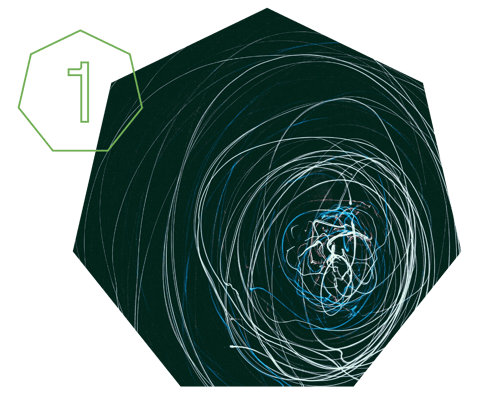7 Dimensions of Cybersecurity
The 7 security dimensions that your organization needs to be secure.
Backed by decades of cybersecurity experience, we know that there is no single policy, system or technology that will keep your organization secure.
That’s why we developed the 7 Dimensions of Cybersecurity. These dimensions provide a consistent, repeatable, and measurable approach to protecting your critical assets.
Our “7 Dimensions of Cybersecurity” has been developed and shaped by our deep knowledge and expertise in cybersecurity. A hallmark of our dimensions is the customizable approach that all organizations, regardless of their industry, size, or security maturity, must implement to deliver a proactive multi-dimensional and layered security defense.
Get to Know the 7 Dimensions
The 7 dimensions of security every organization must develop to remain secure:
Building a Cybersecurity Program Based on Risk
Every organization has varying degrees of risk, risk tolerance and security maturity. That’s why organizations must first ascertain what’s at risk and then create security programs, policies and controls around it. The idea is to build an actionable, repeatable and customizable security program that is most attuned to the requirements at hand.

Establish a Vendor Risk Management Program
A single vulnerability in the supply chain can bring an entire organization to a standstill. Third-party data breaches are a common occurrence so it’s vital that pharma businesses assess their upstream and downstream risks and ensure their supply chains take cybersecurity seriously before sensitive data is shared with partners, vendors, and suppliers.

Take Account of Compliance and Regulations
Across industries, regulations, compliance, and privacy laws are on the rise. Any shortcomings in security controls will result in heavy fines, penalties, legal ramifications, and entanglements. Depending on what’s applicable, ensure your security strategy is compliant with all major regulations and frameworks. Please note that just because your organization is compliant does not mean it is secure.

Train Staff on Cybersecurity Hygiene
Making people aware of security risks and training them in cybersecurity hygiene (strong passwords, multi-factor authentication, expected online behaviors), spotting and reporting suspicious activity (like phishing) -- can turn staff into an extended arm of the security team. Security awareness training doesn’t mean showing videos or conducting a one-time classroom lesson; training must be repeated at periodic intervals using real-world examples, table-top exercises and real-world phishing simulations. Businesses that invest proactively in cybersecurity awareness training are most likely to boost their cyber resilience over time.

Invest In the Right Technology Controls
It’s critical that organizations have necessary security controls in place to protect their most critical assets: People, Process and Technology. This requires an integrated defense approach consisting of technological solutions such as, Managed Detection & Response (MDR), Security Information and Event Management, Data Leakage Prevention, Next Generation Firewalls, Intrusion Prevention Systems, Multi-Factor Authentication, Encryption, Email and Web Security and Next Gen Endpoint both for on-prem and in the cloud.

Avail Cyber Insurance
Cyber-attacks can cost organizations dearly. Cyber insurance helps offset some costs and aids in faster recovery. However cyber premiums are skyrocketing and insurers require that certain fundamental security controls are installed before a cyber insurance policy is underwritten. General Liability and Professional Liability policies do not address cyber exposure so it’s important to consult with your insurance broker to obtain coverage for cyber risks.

Pen Test Defenses Regularly
Hiring a third-party security firm to perform a network penetration test and a thorough vulnerability check at least once annually. All major regulations require organizations do this. Pentest your internal and external infrastructure and review firewall rules, wireless configurations, application code and cloud policy configurations. This process helps identify and plug security loopholes and vulnerabilities proactively before they result in major incidents.

About Towerwall
Learn more about cybersecurity with the Towerwall Advantage: